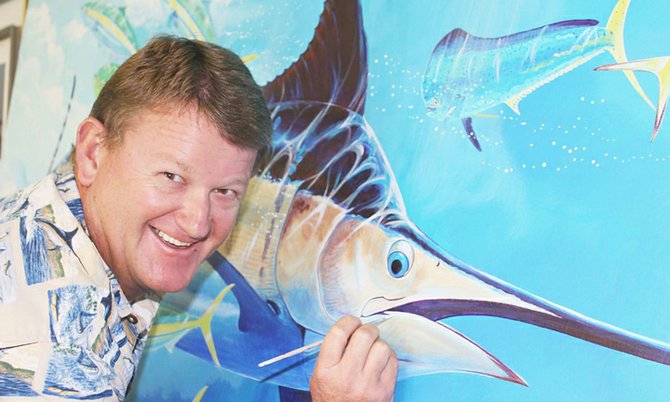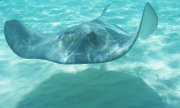LONDON – As part of an entourage attending a dinner fundraiser at Buckingham Palace this Thursday in support of the research, education and outreach programmes of the Central Caribbean Marine Institute, Dr Guy Harvey intends to seek some royal support for the iconic and declining stingray population in the Cayman Islands.
In attendance at the dinner will be CCMI royal patron, Prince Edward, Earl of Wessex, along with other notable dignitaries, including CCMI president Dr Carrie Manfrino.
The Guy Harvey Ocean Foundation (GHOF), which has been active in the Bahamas and around the Caribbean, has provided grants for CCMI study initiatives including climate change on coral reefs and the effectiveness of lionfish eradication programmes.
“I’m looking forward to spending some time with Prince Edward to explain the level of research and the need to protect these valuable animals,” said Dr Harvey.
A Cayman islands resident, Dr Harvey recently launched a petition drive calling on the government to immediately put the National Conservation Law into effect, ensuring the safety and protection of all stingrays in the country’s territorial waters.
Dr Harvey said that currently stingrays are only protected in the country’s designated Wildlife Interaction Zones, Stingray City and the Sandbar, two of the island’s best-known tourist attractions.
According to Dr Harvey there have been some recent proposals to by the Department of Environment to enlarge the current parks, which were created 26 years ago, but outside of these zones there is no protection for stingrays and they can be removed and/or caught and eaten by local residents.
The National Conservation Act would close this loophole and offer better and much needed protection for other vulnerable species including sharks, groupers, other reef fish and coral.
“Maintaining the ecological health of these stingray populations for the long-term will require management and conservation programmes based on a thorough knowledge of the biology of these animals,” said Dr Harvey, who initiated research work on the Cayman Island’s southern stingray (Dasyatis americana) population in 2002.
The Guy Harvey Research Institute, based at Nova Southeastern University in South Florida, has conducted a census each year since 2002 and the population has been very stable at around 100 animals counted in a standard three-day sampling period.
A decline was noticed in 2010 and again in the last two census counts, showing a 40 per cent decrease in the stingray population.
Dr Harvey said four tagged stingrays were subsequently found in a pen in a Dolphin Discovery facility on the island.
“These were released but six other rays (not tagged) are being held by the operators in a contravention of the Animals Law,” he added.
Dr Harvey said the situation at the Sandbar in North Sound is unique, with a large number of wild rays that are not fenced or contained and inhabit the shallow clear water with accessibility every day of the year.
The socio-economic value of the rays to the Cayman economy is enormous. Each animal may generate $500,000 in revenue per year and in its lifetime, assuming they live more than 20 years, may generate $10,000,000.






Comments
Use the comment form below to begin a discussion about this content.
Sign in to comment
Or login with:
OpenID